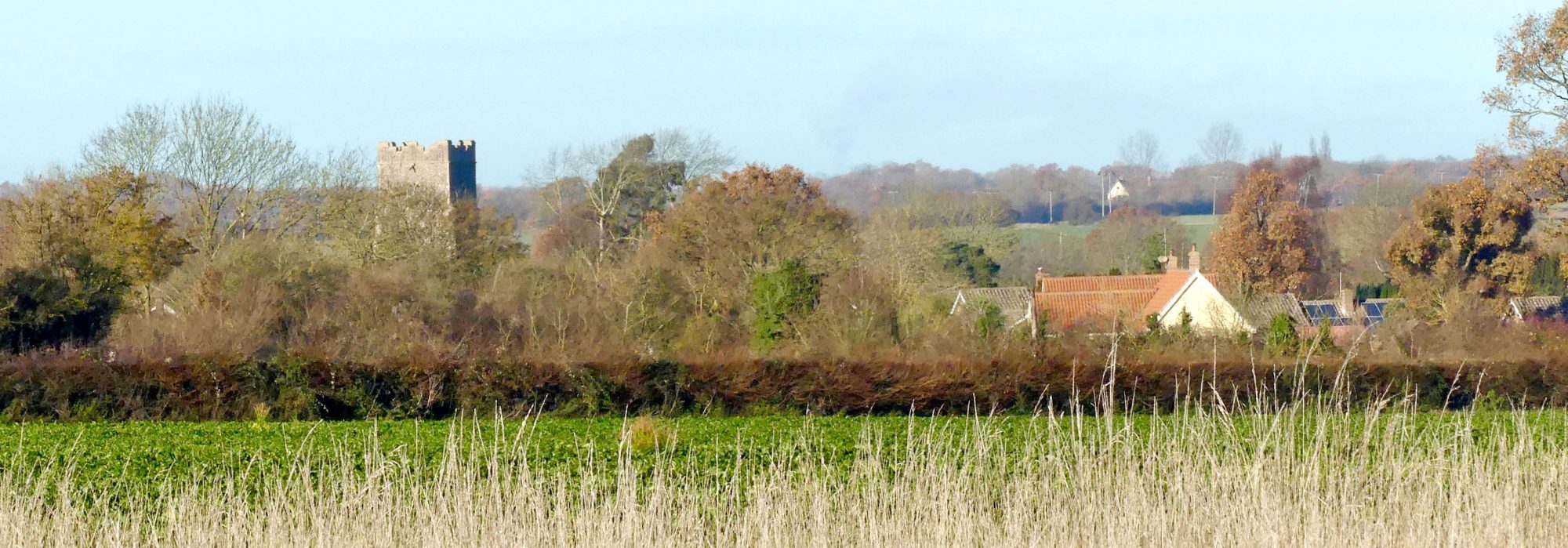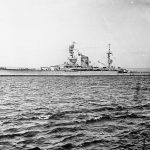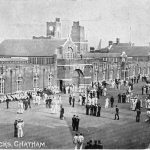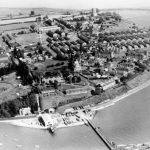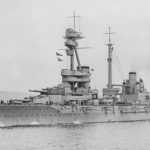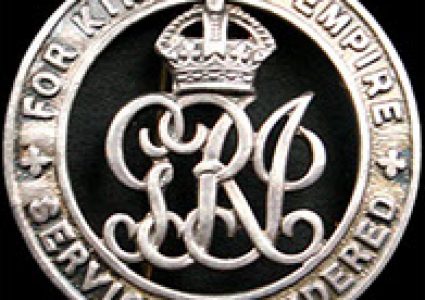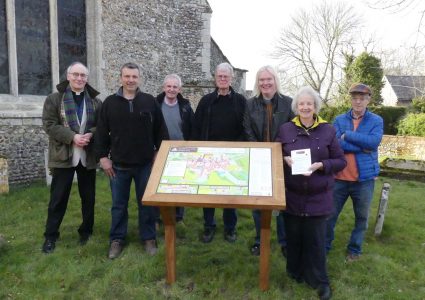On The Roll of Honour
George was born in Waltham le Willows on 25th February 1900; his father, George was 50 and his mother, Maud Alice Lamb was 27.
In the 1901 Census: George was living in Semer, Suffolk in the Cosford Union Workhouse so the family must have come upon hard times even by late Victorian standards when times were fairly hard anyway for many agricultural families.
In the 1911 Census: He was aged 11 and living in Badwell Ash with his father, George, who was 60 and a Farm Labourer and an Army Pensioner. His mother Maud was 38. Also living at the house in The Street was his younger brother, Clifford, aged 8.
Military and War Service: According to his Naval Service Record George joined the Navy as a boy sailor on 2nd April 1916 at the age of 16. He served on HMS Ganges at Shotley in Essex. This was a Royal Naval land based training camp.
He then served on HMS Agincourt from 18th September to 3rd November 1916. By this time, the Agincourt had joined the Grand Fleet in the North Sea. The ship spent most of her time during the war on patrols and exercises, although she did participate in the battle of Jutland in 1916.
Between 4th November 1916 and 25th February 1918, George served on HMS Courageous as a Boy. This ship was very lightly armoured and armed with only a few heavy guns and spent the war patrolling the North Sea. She took part in the 2nd Battle of Heligoland Bight in November 1917 and was there in 1918 when the German High Seas Fleet surrendered.
By 15th July 1918 – and until 3rd December 1918 – he had become an Able Bodied Seaman also on HMS Courageous.
On 4th December 1918 he was transferred to HMS Pembroke at barracks in Chatham. A comment by one of his senior officers described him as follows: ‘Very good character and satisfactory ability’.
On 18th June 1919 at the age of 19 he was invalided out of the Navy with ‘Compound Hypermetropic Astigmatism’ and was subsequently paid his War Gratuity whist still attached to HMS Pembroke.
George’s Navy Career:
HMS Agincourt was a Dreadnought battleship built in the United Kingdom in the early 1910s. She held the distinction of mounting more heavy guns (14) and more turrets (7) than any other Dreadnought battleship, in keeping with the Brazilians’ requirement for an especially impressive design.
Originally built for the Brazilians as the Rio de Janeiro, the ship was very quickly sold to Ottoman Empire who renamed her Sultan Osman I. The ship was nearly complete at Armstrong Whitworth’s yard when World War I broke out. The British government seized her for use by the Royal Navy, renamed HMS Agincourt by the Royal Navy; she joined the Grand Fleet in the North Sea. During the war, the ship spent the bulk of her time on patrols and exercises, although she did participate in the Battle of Jutland in 1916. Agincourt was put into reserve in 1919 and sold for scrap in 1922.
HMS Courageous was the lead ship of the Courageous-class cruisers built for the Royal Navy during the First World War. Designed to support the Baltic Project championed by First Sea Lord John Fisher, the ship was very lightly armoured and armed with only a few heavy guns. Courageous was completed in late 1916 and spent the war patrolling the North Sea. She participated in the Second Battle of Heligoland Bight in November 1917 and was present when the German High Seas Fleet surrendered a year later.
Post War – Unfortunately there is no record of what happened to George after the War other than an article in The Bury Free Press dated January 20th 1920 entitled:
“Ex Sailor who was at Jutland – Alleged Unauthorised St. Dunstan’s Collection – Badwell Ash Man Committed to Assizes”.
This was a report of a Magistrates hearing against Lamb for fraud and dishonesty. The prosecution alleged that George W Lamb attempted to obtain money with intent to cheat and defraud at Badwell Ash on December 24th 1919. It was claimed he obtained Gift Envelopes for St Dunston’s Homes as they benefitted the children of ex-sailors. He initially said he was sent these from the Home but on cross examination, it was discovered he got them from his father, George Lamb who himself had obtained then from the Rev. Dewing. George Lamb worked for the Rev. Dewing doing odd jobs and his intention was to use the envelopes for lighting the fire. Lamb went around the village on Christmas Eve distributing the leaflets on the pretext that they were intended for St Dunston’s Homes whereas the prosecution claimed it was for his own purpose. The Magistrates court thought that there was sufficient evidence to send this to trial and he was committed to the Suffolk Assize. Unfortunately, no record can be found what happened at the Assize.
